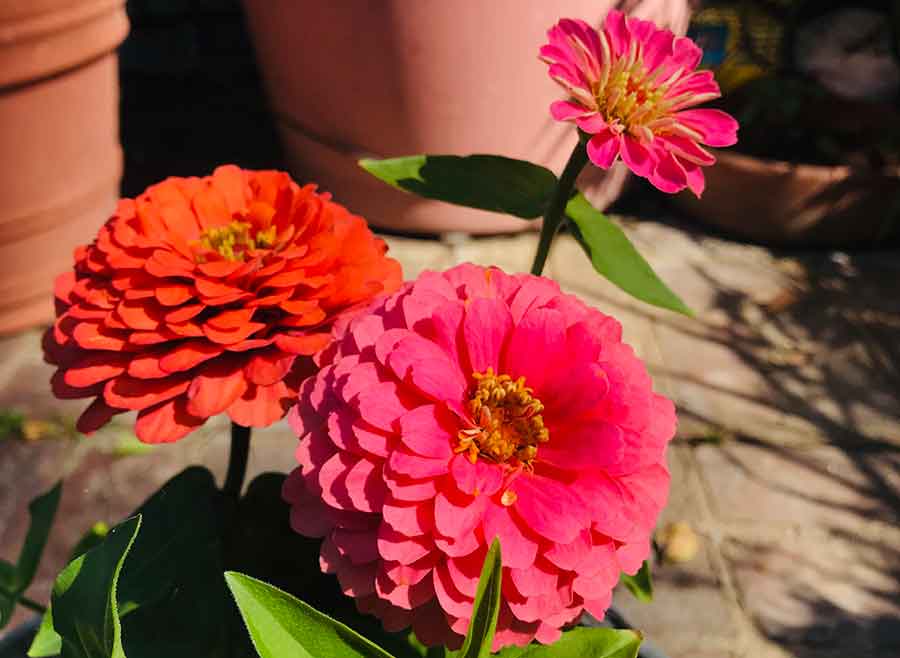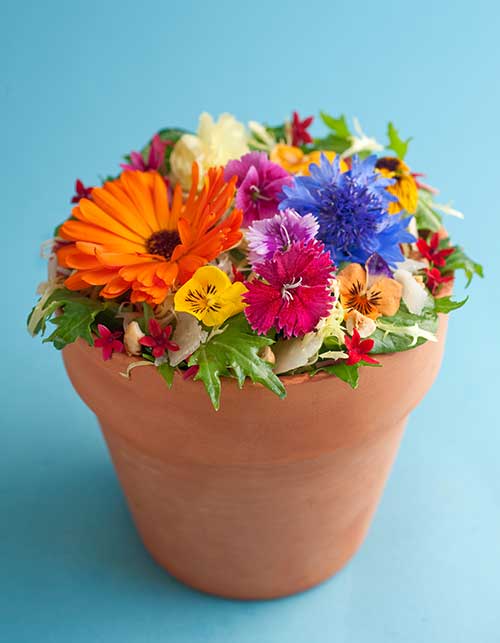
Story Time - Plant the Tiny Seed
Activity 1: Find the Pollen
The plants featured in the book are zinnias, and the book follows a zinnia plant life cycle, from seed to flower, and back to seed again. The book also features important pollinators, animals such as bees, butterflies and hummingbirds. Many plants depend on pollinators to reproduce and have colorful flowers and sweet-smelling nectar to entice animals looking for a sweet snack. Pollinators travel from flower to flower, feeding on nectar. During their travels, they spread a flower’s powdery yellowish pollen to different parts of the flower or from flower to flower, which fertilizes the flower and creates new seeds. Can you find the pollen in this photo of zinnias?

Activity 2: What is a Seed?
A seed is a plant baby. It’s a plant’s way of reproducing or having babies. Have you ever wondered what a seed looks like inside? You can get up close and personal with seeds by soaking a few dried beans in a bowl of water overnight. Once the beans have soaked, you’ll notice that the hard seed coat that protects the seed has softened. You can peel the seed out of its coat and look at the plant embryo inside. Talk about your observations with family and friends or write your observations down. You can also plant those soaked beans and see what happens (for a guide to starting beans, refer to last week’s Story Time activity).
Activity 3: Nature Connections
This book also teaches us about what plants need to survive. The sun is the plant’s source of energy and the sunlight helps plants produce their own food—we rubbed the sun to make it hotter when we read the book. What are other things that plants need to survive that we can find in this book? Talk about them with family or friends or draw them or write them down.
We also learned about the interdependence of plants and animals, meaning that plants and animals depend on one another to survive. What animals can you find that depend on plants in this book? (Hint: check out the last page!) What animals can you find that plants depend on for their survival? Place yourself in this book. Do you depend on plants and other animals for your survival?
Activity 4: Make a Flowerpot Salad

This salad uses seeds, leaves and blossoms to make it look like a flower garden in a pot. If you don’t have any edible flowers, don’t worry. Make a garden of seeds and plants that you like to eat. This recipe was adapted from Bob Blumer’s Glutton for Pleasure.
For the salad
6 ounces mixed baby greens (about half a bag)—or whatever greens you have on hand
3 tablespoons roasted pumpkin seeds, sunflower seeds, or any other seeds you have on hand
1/4 cup grated parmesan (about 1 1/2 ounces), or any hard cheese of your choice
Salt and pepper
1 handful of edible flowers, such as nasturtiums. If you don’t have flowers, peel root vegetables, such as carrots or beets, into petal “curls”
2 small flowerpots, lined with aluminum foil (these will be your salad bowls)
For the dressing
3 tablespoons olive oil
1 tablespoon vinegar of your choice, or lemon juice
In a large bowl, add greens, seeds, cheese and just enough dressing to lightly dress the greens. Gently toss. Season to taste with salt and pepper. Add edible flowers or your root vegetable curls on top. Put your salad into your flowerpots, lined with aluminum foil, and enjoy!